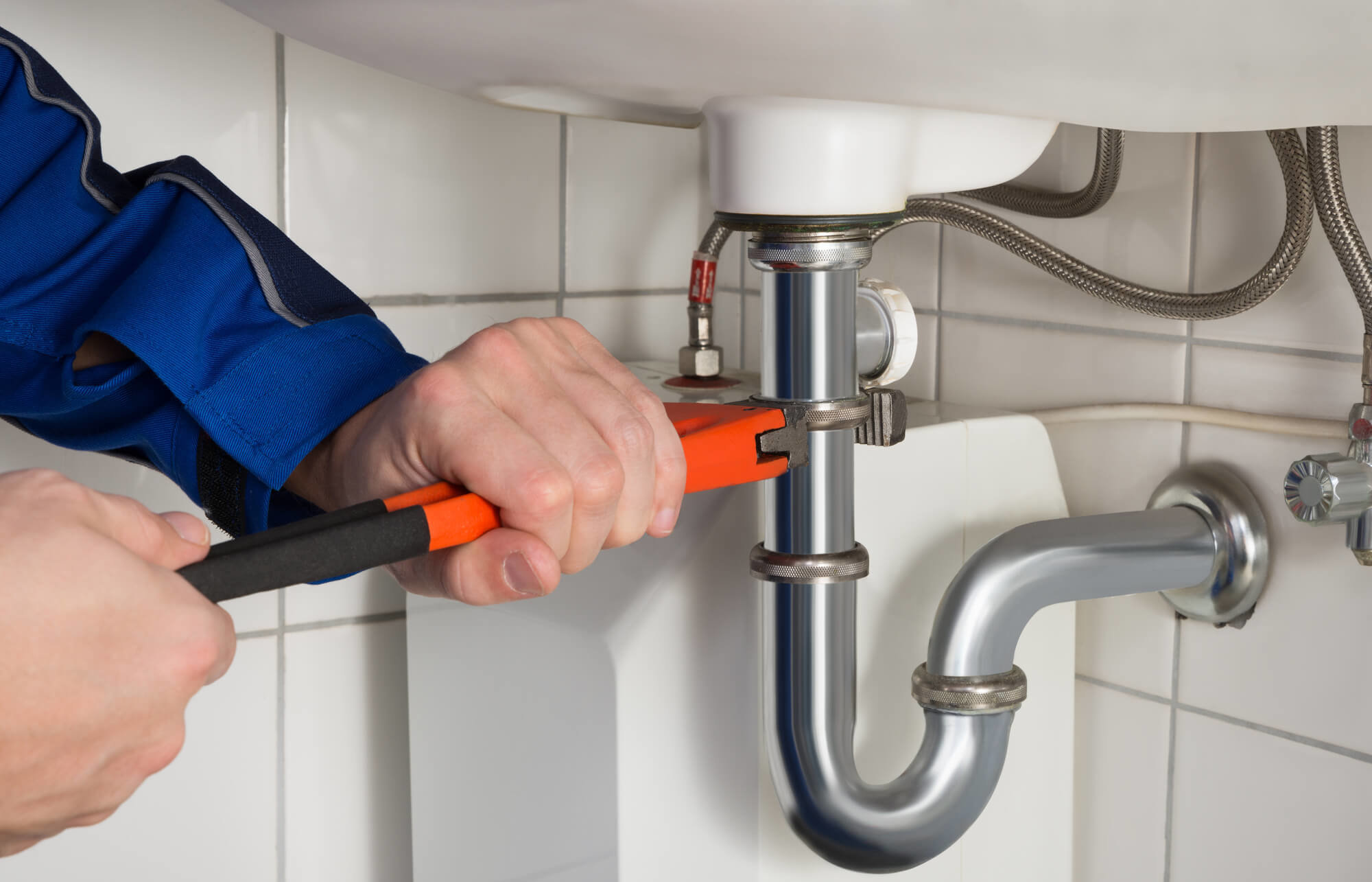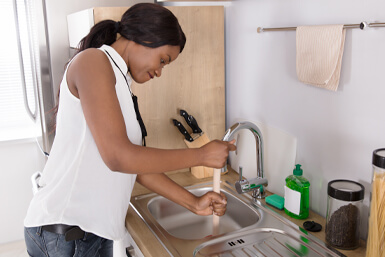They are making several good points about Why Do My Pipes Make Noises as a whole in the article underneath.

To identify loud plumbing, it is necessary to determine first whether the unwanted noises happen on the system's inlet side-in various other words, when water is transformed on-or on the drainpipe side. Noises on the inlet side have varied causes: excessive water pressure, worn shutoff as well as faucet components, poorly attached pumps or other appliances, improperly put pipeline bolts, and also plumbing runs having way too many limited bends or various other constraints. Noises on the drain side generally come from poor place or, similar to some inlet side noise, a format having limited bends.
Hissing
Hissing sound that takes place when a tap is opened somewhat normally signals extreme water pressure. Consult your neighborhood water company if you believe this problem; it will certainly be able to tell you the water stress in your location and can set up a pressurereducing shutoff on the incoming water system pipeline if necessary.
Thudding
Thudding noise, commonly accompanied by shivering pipes, when a faucet or appliance valve is shut off is a problem called water hammer. The sound as well as resonance are triggered by the resounding wave of pressure in the water, which unexpectedly has no area to go. Sometimes opening a shutoff that releases water promptly into a section of piping consisting of a constraint, elbow joint, or tee installation can generate the very same condition.
Water hammer can generally be healed by mounting fittings called air chambers or shock absorbers in the plumbing to which the issue valves or faucets are connected. These gadgets allow the shock wave developed by the halted circulation of water to dissipate airborne they contain, which (unlike water) is compressible.
Older plumbing systems may have brief upright areas of capped pipe behind walls on faucet competes the very same function; these can ultimately fill with water, reducing or damaging their efficiency. The cure is to drain the water supply totally by shutting off the major water system valve and also opening all faucets. After that open the main supply shutoff and shut the faucets one at a time, beginning with the faucet nearest the shutoff as well as finishing with the one farthest away.
Chattering or Screeching
Intense chattering or screeching that happens when a valve or faucet is activated, and that generally disappears when the fitting is opened completely, signals loosened or defective interior components. The service is to change the shutoff or faucet with a new one.
Pumps as well as appliances such as washing makers and dish washers can move motor noise to pipelines if they are poorly connected. Connect such things to plumbing with plastic or rubber hoses-never inflexible pipe-to isolate them.
Various Other Inlet Side Noises
Squeaking, squealing, scraping, breaking, and touching usually are brought on by the development or tightening of pipes, generally copper ones supplying warm water. The noises occur as the pipelines slide versus loose bolts or strike close-by house framework. You can usually identify the location of the trouble if the pipes are revealed; just adhere to the noise when the pipelines are making noise. More than likely you will uncover a loose pipeline hanger or a location where pipes exist so near flooring joists or other mounting items that they clatter against them. Affixing foam pipe insulation around the pipelines at the point of get in touch with need to treat the problem. Make sure bands and wall mounts are safe as well as supply appropriate assistance. Where possible, pipeline fasteners should be attached to substantial structural elements such as foundation walls instead of to framing; doing so lessens the transmission of vibrations from plumbing to surfaces that can amplify and move them. If affixing bolts to framing is inevitable, cover pipes with insulation or various other resilient material where they contact fasteners, as well as sandwich the ends of new fasteners between rubber washers when installing them.
Fixing plumbing runs that struggle with flow-restricting tight or various bends is a last option that ought to be carried out only after speaking with an experienced plumbing professional. Unfortunately, this scenario is relatively common in older residences that might not have been constructed with indoor plumbing or that have actually seen a number of remodels, especially by beginners.
Drainpipe Sound
On the drain side of plumbing, the principal goals are to remove surfaces that can be struck by dropping or hurrying water and also to protect pipes to consist of unavoidable sounds.
In new building and construction, tubs, shower stalls, toilets, and wallmounted sinks as well as containers must be set on or versus resilient underlayments to reduce the transmission of audio with them. Water-saving toilets and also taps are much less noisy than standard models; install them rather than older types even if codes in your location still allow making use of older components.
Drains that do not run vertically to the basement or that branch into straight pipeline runs sustained at flooring joists or other framing existing especially troublesome noise troubles. Such pipelines are big enough to emit significant vibration; they also lug substantial amounts of water, that makes the circumstance worse. In new construction, specify cast-iron soil pipelines (the huge pipelines that drain pipes toilets) if you can manage them. Their enormity consists of much of the noise made by water travelling through them. Likewise, prevent directing drainpipes in walls shown to rooms and spaces where individuals gather. Walls containing drainpipes need to be soundproofed as was described previously, using double panels of sound-insulating fiber board as well as wallboard. Pipelines themselves can be covered with unique fiberglass insulation made for the purpose; such pipes have an impervious vinyl skin (sometimes having lead). Outcomes are not constantly adequate.
WHY IS MY PLUMBING MAKING SO MUCH NOISE?
This noise indeed sounds like someone is banging a hammer against your pipes! It happens when a faucet is opened, allowed to run for a bit, then quickly shut — causing the rushing water to slam against the shut-off valve.
To remedy this, you’ll need to check and refill your air chamber. Air chambers are filled with — you guessed it — air and help absorb the shock of moving water (that comes to a sudden stop). Over time, these chambers can fill with water, making them less effective.
You’ll want to turn off your home’s water supply, then open ALL faucets (from the bathroom sink to outdoor hose bib) to drain your pipes. Then, turn the water back on and hopefully the noise stops! If you’re still hearing the sound, give us a call to examine further.
Whistles
Whistling sounds can be frustrating, as sometimes the source isn’t easily identified. However, if you can pinpoint which faucet or valve that may be the cause, you’ll likely encounter a worn gasket or washer — an easy fix if you replace the worn parts!Whistling sounds from elsewhere can mean a number of things — from high water pressure to mineral deposits. Your best plan of attack here is to give our plumbing experts a call. We’ll be able to determine where the noise is coming from and what the cause may be, then recommend an effective fix!
Cracks or Ticks
Cracking or ticking typically comes from hot water going through cold, copper pipes. This causes the copper to expand resulting in a cracking or ticking sound. Once the pipes stop expanding, the noise should stop as well.
Pro tip: you may want to lower the temperature of your water heater to see if that helps lessen the sound, or wrapping the pipe in insulation can also help muffle the noise.
Bangs
Bangs typically come from water pressure that’s too high. To test for high water pressure, get a pressure gauge and attach it to your faucet. Water pressure should be no higher than 80 psi (pounds per square inch) and also no lower than 40 psi. If you find a number greater than 80 psi, then you’ve found your problem!
Next step is to give us a call in order to install a pressure regulator. Trust us, you don’t want to wait to resolve this issue. Not only is the sound annoying, but high water pressure can be destructive to your home — including damaging certain appliances, like your washer and dishwasher.
Dripping
You might be accustom to the slow quiet drip your kitchen faucet makes. You might have even tuned out your bathroom sink dripping and drabbing all day long — but it’s time to find its cause.
A slow drip could signify a variety of easy to fix issues, such as a worn out O ring, or loose part. And by ignoring the drip, you could be wasting up to 2,000 gallons of water a year! So start conserving water — get it looked at ASAP.
https://www.pwessig.com/blog/2018/december/why-is-my-plumbing-making-so-much-noise-/

Do you like reading up on How To Fix Noisy Pipes? Put a remark below. We'd be delighted to see your views about this review. In hopes that you visit us again in the near future. Do you know about another person who is in to the niche? Why not share it. Many thanks for your time. Kindly pay a visit to our website back soon.
Perfect solution? Dial!